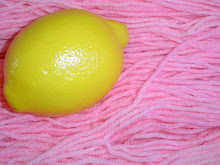March Socks!
I've finished my first Zwergenaufstand sock and I'm halfway down the leg of the second one! I need to get these finished by the end of the month in order to get credit for the Craft-A-Long. As I explained on a previous post, for the most part I'm knitting these exactly as the pattern is written. I worked the cuff ribbing on Size US 0's (2.0 mm), then I switched to Size US 1's (2.25 mm) for the leg. I went back to the smaller needles when I started the heel flap and used those all the way through finishing the toe. I didn't change any of the stitch counts from the pattern, I just used the smaller needles on the stranded section of the foot because I have narrow feet, and by trying on the sock-in-progress, I could tell that if I worked the foot color work in the larger needles, I wouldn't have a snug fit on my sock.
The only big change I made to the sock was using the toe decreases I've used on 99% of my socks instead of the pattern's toe. I don't know the name of "my" toe, but you work decrease rounds every other round until you've decreased half of the total foot stitches, then you work the decrease round every round until your stitch count is one quarter of the total foot stitches, then you Kitchener stitch the toe closed. Occasionally, I have to juggle the numbers a bit if the total number of stitches doesn't divide out neatly, but that's easy enough to do, and knitted fabric is very forgiving.
Labels: socks esk, Stranded Colorwork











0 Comments:
Post a Comment
<< Home